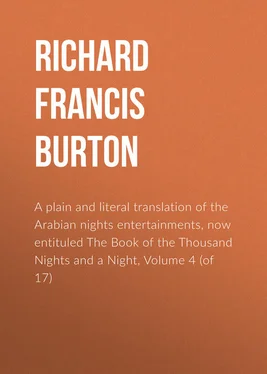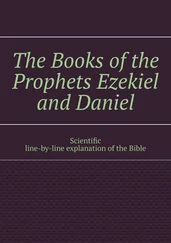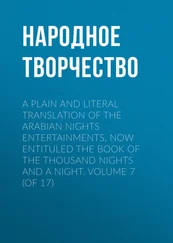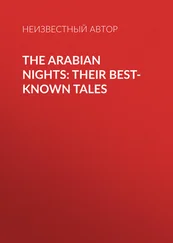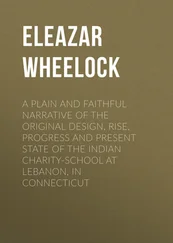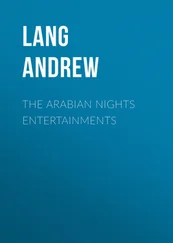Richard Burton - A plain and literal translation of the Arabian nights entertainments, now entituled The Book of the Thousand Nights and a Night, Volume 4 (of 17)
Здесь есть возможность читать онлайн «Richard Burton - A plain and literal translation of the Arabian nights entertainments, now entituled The Book of the Thousand Nights and a Night, Volume 4 (of 17)» — ознакомительный отрывок электронной книги совершенно бесплатно, а после прочтения отрывка купить полную версию. В некоторых случаях можно слушать аудио, скачать через торрент в формате fb2 и присутствует краткое содержание. Жанр: foreign_antique, foreign_prose, на английском языке. Описание произведения, (предисловие) а так же отзывы посетителей доступны на портале библиотеки ЛибКат.
- Название:A plain and literal translation of the Arabian nights entertainments, now entituled The Book of the Thousand Nights and a Night, Volume 4 (of 17)
- Автор:
- Жанр:
- Год:неизвестен
- ISBN:нет данных
- Рейтинг книги:4 / 5. Голосов: 1
-
Избранное:Добавить в избранное
- Отзывы:
-
Ваша оценка:
- 80
- 1
- 2
- 3
- 4
- 5
A plain and literal translation of the Arabian nights entertainments, now entituled The Book of the Thousand Nights and a Night, Volume 4 (of 17): краткое содержание, описание и аннотация
Предлагаем к чтению аннотацию, описание, краткое содержание или предисловие (зависит от того, что написал сам автор книги «A plain and literal translation of the Arabian nights entertainments, now entituled The Book of the Thousand Nights and a Night, Volume 4 (of 17)»). Если вы не нашли необходимую информацию о книге — напишите в комментариях, мы постараемся отыскать её.
A plain and literal translation of the Arabian nights entertainments, now entituled The Book of the Thousand Nights and a Night, Volume 4 (of 17) — читать онлайн ознакомительный отрывок
Ниже представлен текст книги, разбитый по страницам. Система сохранения места последней прочитанной страницы, позволяет с удобством читать онлайн бесплатно книгу «A plain and literal translation of the Arabian nights entertainments, now entituled The Book of the Thousand Nights and a Night, Volume 4 (of 17)», без необходимости каждый раз заново искать на чём Вы остановились. Поставьте закладку, и сможете в любой момент перейти на страницу, на которой закончили чтение.
Интервал:
Закладка:
17
Easterns, I have remarked, mostly recognise the artistic truth that the animal man is handsomer than woman; and that “fair sex” is truly only of skin-colour. The same is the general rule throughout creation, for instance the stallion compared with the mare, the cock with the hen; while there are sundry exceptions such as the Falconidæ.
18
The Badawi (who is nothing if not horsey) compares the gait of a woman who walks well (in Europe rarely seen out of Spain) with the slightly swinging walk of a thoroughbred mare, bending her graceful neck and looking from side to side at objects as she passes.
19
Li ‘lláhi (darr’) al-káil, a characteristic idiom. “Darr” = giving (rich) milk copiously; and the phrase expresses admiration, “To Allah be ascribed (or Allah be praised for) his rich eloquence who said,” etc. Some Hebraists would render it, “Divinely (well) did he speak who said,” etc., holding “Allah” to express a superlative like “Yah” (Jah) in Gen. iv. 1; x. 9. Nimrod was a hunter to the person (or presence) of Yah, i. e. mighty hunter.
20
Hamzah and Abbás were the famous uncles of Mohammed often noticed; Ukayl is not known; possibly it may be Akíl, a son of the fourth Caliph, Ali.
21
The Eastern ring is rarely plain; and, its use being that of a signet, it is always in intaglio: the Egyptians invented engraving hieroglyphics on wooden stamps for marking bricks and applied the process to the ring. Moses B.C. 1491 (Exod. xxviii. 9) took two onyx-stones, and graved on them the names of the children of Israel. From this the signet ring was but a step. Herodotus mentions an emerald seal set in gold, that of Polycrates, the work of Theodorus son of Telecles the Samian (iii. 141). The Egyptians also were perfectly acquainted with working in cameo (anaglyph) and rilievo, as may be seen in the cavo rilievo of the finest of their hieroglyphs. The Greeks borrowed from them the cameo and applied it to gems ( e. g. Tryphon’s in the Marlborough collection), and they bequeathed the art to the Romans. We read in a modern book “Cameo means an onyx, and the most famous cameo in the world is the onyx containing the Apotheosis of Augustus.” The ring is given in marriage because it was a seal by which orders were signed (Gen. xxxviii. 18 and Esther iii. 10-12). I may note that the seal-ring of Cheops (Khufu), found in the Greatest Pyramid, was in the possession of my old friend, Doctor Abbott, of Auburn (U.S.), and was sold with his collection. It is the oldest ring in the world, and settles the Cheops-question.
22
This habit of weeping when friends meet after long parting is customary, I have noted, amongst the American “Indians,” the Badawin of the New World; they shed tears thinking of the friends they have lost. Like most primitive people they are ever ready to weep as was Æneas or Shakespeare’s saline personage: —
This would make a man, a man of salt
To use his eyes for garden waterpots.
23
Here poetical justice is not done; in most Arab tales the two adulterous Queens would have been put to death.
24
Pronounce Aladdin Abush-Shámát.
25
Arab. “Misr” vulg. Masr: a close connection of Misraim – the “two Misrs,” Egypt, upper and lower.
26
The Persians still call their Consuls “Shah-bandar,” lit. king of the Bandar or port.
27
Arab. “Dukhúl,” the night of going in, of seeing the bride unveiled for the first time, etcætera.
28
Arab. “Barsh” or “Bars,” the commonest kind. In India it is called Ma’jún (= electuary, generally): it is made of Ganja or young leaves, buds, capsules and florets of hemp ( C. sativa ), poppy-seed and flowers of the thorn-apple ( datura ) with milk and sugar-candy, nutmegs, cloves, mace and saffron, all boiled to the consistency of treacle which hardens when cold. Several recipes are given by Herklots (Glossary s. v. Majoon). These electuaries are usually prepared with “Charas,” or gum of hemp, collected by hand or by passing a blanket over the plant in early morning, and it is highly intoxicating. Another intoxicant is “Sabzi,” dried hemp-leaves, poppy-seed, cucumber-seed, black pepper and cardamoms rubbed down in a mortar with a wooden pestle, and made drinkable by adding milk, ice-cream, etc. The Hashish of Arabia is the Hindustani Bhang, usually drunk and made as follows. Take of hemp-leaves, well washed, 3 drams; black pepper 45 grains and of cloves, nutmeg and mace (which add to the intoxication) each 12 grains. Triturate in 8 ounces of water or the juice of watermelon or cucumber, strain and drink. The Egyptian Zabíbah is a preparation of hemp-florets, opium and honey, much affected by the lower orders, whence the proverb: “Temper thy sorrow with Zabibah,.” In Al-Hijaz it is mixed with raisins (Zabíb) and smoked in the water-pipe. (Burckhardt No. 73). Besides these there is (1) “Post” poppy-seed prepared in various ways but especially in sugared sherbets; (2) Datura ( stramonium ) seed, the produce of the thorn-apple, bleached and put into sweetmeats by dishonest confectioners; it is a dangerous intoxicant, producing spectral visions, delirium tremens, etc.; and (3) various preparations of opium especially the “Madad,” pills made up with toasted betel-leaf and smoked. Opium, however, is usually drunk in the shape of “Kusumba,” a pill placed in wet cotton and squeezed in order to strain and clean it of the cowdung and other filth with which it is adulterated.
29
Arab. “Sikankúr” (Gr. Σκίγκος, Lat. Scincus) a lizard ( S. officinalis ) which, held in the hand, still acts as an aphrodisiac in the East, and which in the Middle Ages was considered a universal medicine. In the “Adja’ib al-Hind” (Les Merveilles de l’Inde) we find a notice of a bald-headed old man who was compelled to know his wife twice a day and twice a night in consequence of having eaten a certain fish. (Chapt. lxxviii. of the translation by M. L. Marcel Devic, from a manuscript of the tenth century; Paris, Lemaire, 1878). Europeans deride these prescriptions, but Easterns know better: they affect the fancy, that is, the brain; and often succeed in temporarily relieving impotence. The recipes for this evil, which is incurable only when it comes from heart-affections, are innumerable in the East; and about half of every medical work is devoted to them. Many a quack has made his fortune with a few bottles of tincture of cantharides, and a man who could discover a specific would become a millionaire in India only. The curious reader will consult for specimens the Ananga-Ranga Shastra by Koka Pandit; or the “Rujú ‘al-Shaykh ila ‘l-Sabáh fi Kuwwati ‘l-Báh” (the Return of the Old Man to Youth in power of Procreation) by Ahmad bin Sulaymán known as Ibn Kamál Báshá in 139 chapters lithographed at Cairo. Of these aphrodisiacs I shall have more to say.
30
Alá al-Din (our old friend Aladdin) = Glory of the Faith, a name of which Mohammed, who preferred the simplest, like his own, would have highly disapproved. The most grateful names to Allah are Abdallah (Allah’s Slave) and Abd al-Rahmán (Slave of the Compassionate); the truest are Al-Hárith (the gainer, “bread-winner”) and Al-Hammám (the griever); and the hatefullest are Al-Harb (witch) and Al-Murrah (bitterness, Abu Murrah being a kunyat or by-name of the Devil). Abu al-Shámát (pronounced Abush-shámát) = Father of Moles, concerning which I have already given details. These names ending in – Din (faith) began with the Caliph Al-Muktadi bi-Amri ‘llah (regn. A.H. 467 = 1075), who entitled his Wazir “Zahír al-Din” (Backer or Defender of the Faith) and this gave rise to the practice. It may be observed that the superstition of naming by omens is in no way obsolete.
Читать дальшеИнтервал:
Закладка:
Похожие книги на «A plain and literal translation of the Arabian nights entertainments, now entituled The Book of the Thousand Nights and a Night, Volume 4 (of 17)»
Представляем Вашему вниманию похожие книги на «A plain and literal translation of the Arabian nights entertainments, now entituled The Book of the Thousand Nights and a Night, Volume 4 (of 17)» списком для выбора. Мы отобрали схожую по названию и смыслу литературу в надежде предоставить читателям больше вариантов отыскать новые, интересные, ещё непрочитанные произведения.
Обсуждение, отзывы о книге «A plain and literal translation of the Arabian nights entertainments, now entituled The Book of the Thousand Nights and a Night, Volume 4 (of 17)» и просто собственные мнения читателей. Оставьте ваши комментарии, напишите, что Вы думаете о произведении, его смысле или главных героях. Укажите что конкретно понравилось, а что нет, и почему Вы так считаете.
